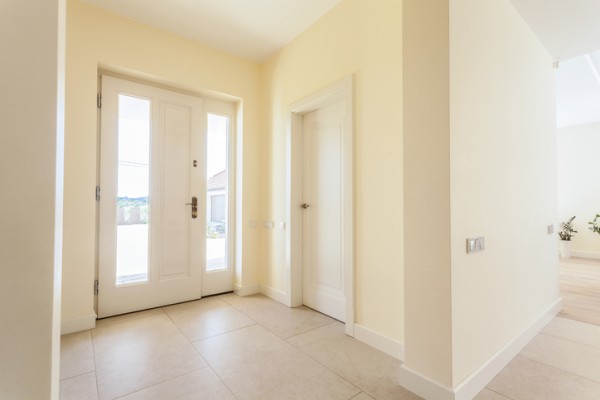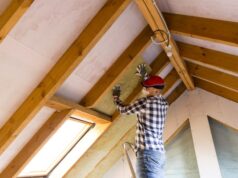
Getting your door handing and swing direction right isn’t just about aesthetics—it affects how your doors open, how hardware is installed, and whether your home complies with key regulations. It’s something that’s often overlooked until the wrong door shows up, or a handle ends up on the wrong side.
This quick guide explains how to correctly identify door handing and swing direction for your renovation, especially if you’re installing new doors or framing interior walls.
What is door handing?
Handing refers to the side of the door the hinges are located on when you’re facing the side that opens toward you. In simple terms:
- Left-handed door: Hinges on the left
- Right-handed door: Hinges on the right
You’ll need to know this to correctly order or install door furniture like levers, knobs, locks and latches. Many types of hardware are handed, meaning they only suit one configuration.
Understanding swing direction
The swing direction tells you whether the door opens inward or outward. This matters for things like room layout and building compliance.
There are four common combinations:
| Configuration | Hinges side | Opens… | Also called |
|---|---|---|---|
| Left-hand (LH) | Left | Inward (push) | Normal swing |
| Right-hand (RH) | Right | Inward (push) | Normal swing |
| Left-hand reverse (LHR) | Left | Outward (pull) | Reverse swing |
| Right-hand reverse (RHR) | Right | Outward (pull) | Reverse swing |
In Australia, inswing doors are most common for internal rooms, while outswing doors are more typical on external entrances or in bushfire-prone areas for safety and compliance.
How to determine your door handing
Here’s an easy way to figure it out:
- Stand on the outside of the door—typically the key or lock side.
- Face the door so it opens away from you (push).
- If the hinges are on your left, it’s a left-hand door. If they’re on the right, it’s right-hand.
For outswing doors (like those on many external decks), the same rules apply—but the door opens toward you.
Why it matters in a renovation
Door handing affects much more than just how a door opens. It influences:
- Furniture placement and traffic flow
- Privacy in bathrooms and bedrooms
- Safety in high-traffic areas and fire-rated zones
- Hardware installation, especially for mortice locks and handles
If you’re planning to re-hang a door, be aware that flipping its swing direction usually requires filling old screw holes, re-routing hinge positions and sometimes replacing the frame altogether.
Common mistakes to avoid
- Mixing up left and right: Always check from the correct side (the exterior or key side).
- Ignoring outswing vs inswing: Essential when ordering pre-hung doors or fitting external weather seals.
- Assuming all hardware is reversible: It often isn’t—especially locks and handles.
Final checks before ordering
Before you buy a door or any hardware, confirm:
- Door handing (left or right)
- Swing direction (inward or outward)
- Door size and clearance
- Frame type (rebated, flush, or custom)
If you’re unsure, speak to your builder, or refer to your floor plans and check how the door is shown swinging.





